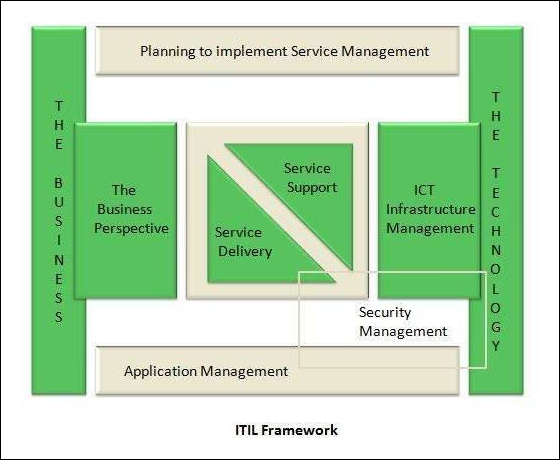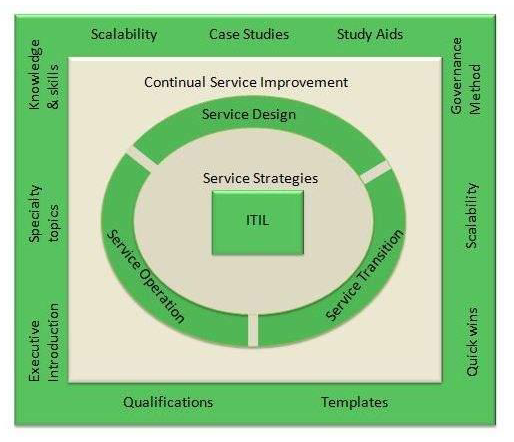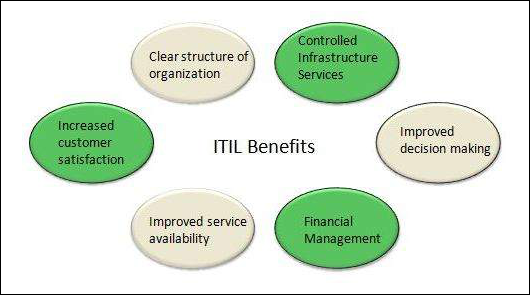
- ITIL - Home
- ITIL - Overview
- ITIL - Terminologies
- ITIL - Service Basics
- ITIL - Service Lifecycle
- Service Strategy
- ITIL - Service Strategy Overview
- ITIL - Service Strategy Roles
- ITIL - Strategy Generation
- ITIL - Service Portfolio Management
- Business Relationship Management
- ITIL - Demand Management
- ITIL - Financial Management
- Service Design
- ITIL - Service Design Overview
- ITIL - Service Catalogue Management
- ITIL - Service Level Management
- ITIL - Capacity Management
- ITIL - Availability Management
- ITIL - Service Continuity Management
- Information Security Management
- ITIL - Supplier Management
- Service Transition
- ITIL - Service Transition Overview
- ITIL - Project Management
- ITIL - Change Management
- Service Assets and Configuration Management
- Release and Deployment Management
- ITIL - Service and Validation Testing
- Service Operation
- ITIL - Service Operation Overview
- ITIL - Event Management
- ITIL - Incident and Request
- ITIL - Problem Management
- ITIL - Access Management
- Continual Service Improvement
- CSI Overview
- Service Reporting
ITIL - Overview
ITIL is a framework providing best practice guidelines on all aspects of end to end service management. It covers a complete spectrum of people, processes, products and use of partners.
Now a days, ITIL is being practiced by almost every company providing IT services to its customers.

The processes, tasks and checklists described in ITIL are not organization-specific, but can be implemented by any organization. It gives organization a framework to plan, implement and measure IT services.
ITIL was published in 1989 by Her Majesty's Stationery Office (HMSO) in UK on behalf of the Central Communications and Telecommunications Agency (CCTA), now subsumed within the Office of Government Commerce (OGC).
Why ITIL is required?
ITIL helps business managers and IT managers to deliver services to the customers in an effective manner and hence gaining the customers confidence and satisfaction. The areas where ITIL plays an effective role are as given below −
IT and business strategic planning
Integrating and aligning IT and business goals
Implementing continuous improvement
Acquiring and retaining the right resources and skill sets
Reducing costs and the Total Cost of Ownership
Demonstrating the business value to IT
Achieving and demonstrating Value for Money and Return on Investment.
Measuring IT organization effectiveness and efficiency
Developing business and IT partnerships and relationships
Improving project delivery success
Managing constant business and IT change
ITIL Versions
In its first form, ITIL was a collection of books which covered all aspects of IT service management. Since then, ITIL underwent many changes and thus many versions of ITIL exist as given below −
ITIL V1
This is the first version of ITIL and comprised 31 books initially.
ITIL V2 (2000 to 2004)
The V1 was replaced with 7 books and gained much prominence during 2000 to 2004. Many companies across several countries currently are adopting this version and this has become an accepted version too.
ITILV2 (2007)
This is yet another modified and consolidated version of the previous ITILV2 and this is called with 3rd version of ITIL, consisting of five core books covering the service lifecycle. ITIL V3 included 26 processes and 4 functions.
In 2011, the 2011 edition of V3 was published. It was an updated version released in 2007.
ITIL Publications
ITIL core publications include a set of five manuals Service Strategy, Service Design, Service Transition, Service Operation and Continual Service Management.

Benefits of ITIL
The following diagram shows the benefits that ITIL offers −

ITIL V2 vs ITIL V3
A comparison of ITIL V2 and ITIL V3 is shown in the following table −
| ITIL V2 | ITIL V3 |
|---|---|
| Focused on product, process and people. | Focused on product, process, people and partner. |
| Process oriented approach | Lifecycle based approach. |
| Security management is part of evaluation | Security management is a separate process |
| Emphasizes on service design and service strategy | Equal attention to all processes |
| Comprises 10 processes and 2 functions | Comprises 26 processes and 4 functions. |